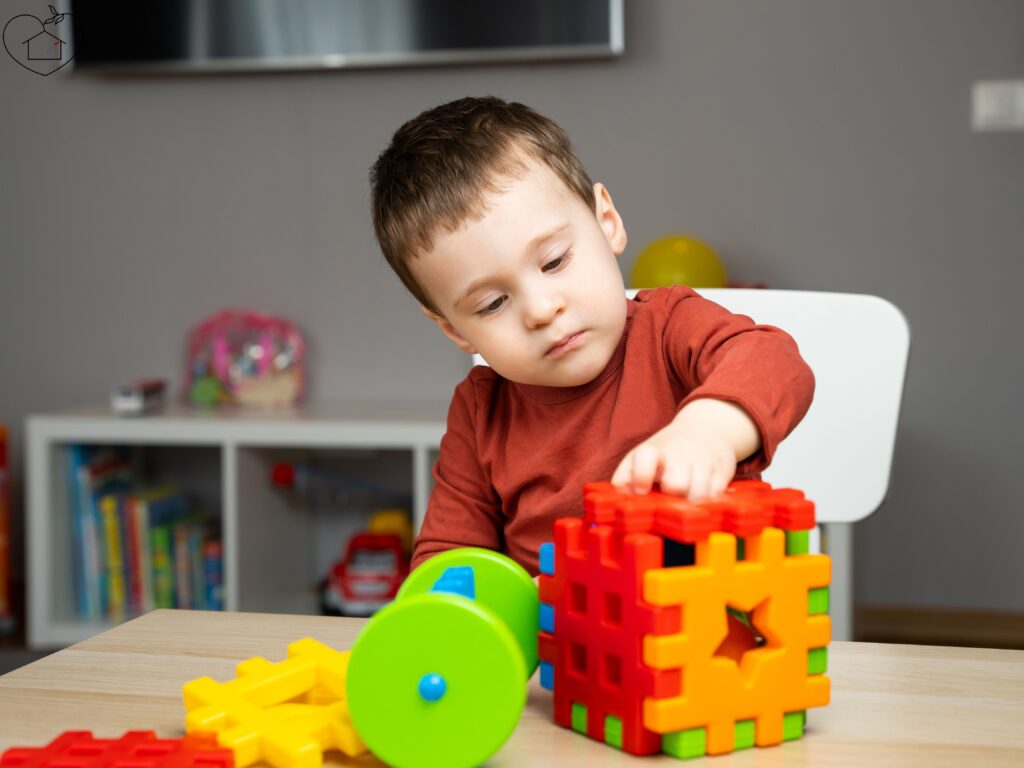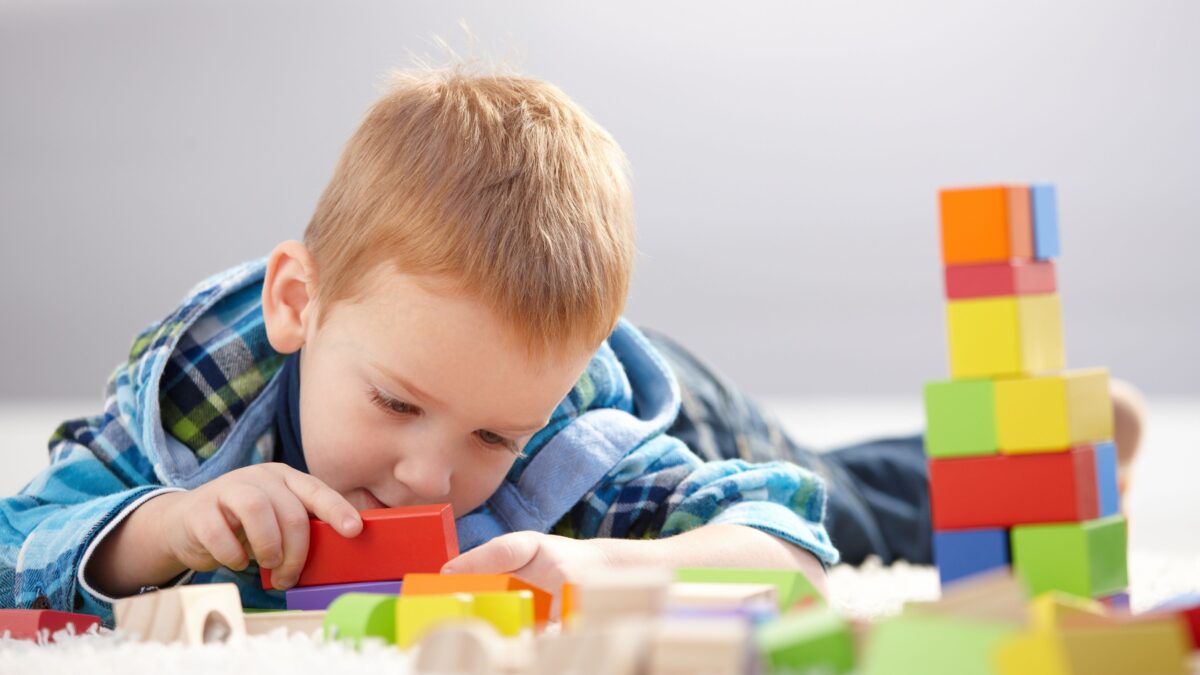Choosing the best toys for 1-year-old children is about more than just fun—it’s about encouraging their growth, exploration, and learning. At this stage, toddlers are developing essential skills such as motor coordination, problem-solving, language, and social interaction. The right toys can help strengthen these abilities while keeping your little one amused and entertained. From sensory toys to push-and-pull walkers, playthings that promote cognitive, physical, and emotional development are ideal for this age. In this guide, we will examine the developmental needs of a 1-year-old, the psychological perspective on play, and a list of the 10 best toys for 1-year-old toddlers to support their early learning journey.
Table of Contents
ToggleDevelopmental Needs of a 1-Year-Old
By the time a baby turns one, they are transitioning from infancy to toddlerhood, an exciting phase of rapid growth and discovery. Here are the key developmental areas to consider when selecting toys:
1. Gross and Fine Motor Skills
Most one-year-olds are learning to stand, cruise, or take their first steps. Toys that encourage balance, coordination, and movement (like push toys) can help build confidence in walking.
Fine motor skills are also developing, so activities like grasping, stacking, and pressing buttons help strengthen hand-eye coordination and dexterity.
2. Sensory Exploration
At this age, children study the world through touch, taste, and sound. Sensory-rich toys like textured balls, rattles, and musical instruments improve sensory processing.
Bright colors, varied textures, and different sounds help stimulate cognitive and sensory development.
3. Cognitive and Problem-Solving Skills
Babies begin to understand cause-and-effect relationships—for example, realizing that pressing a button makes a toy light up.
Simple puzzles, stacking cups, and shape sorters encourage problem-solving and spatial awareness.
4. Social and Emotional Growth
One-year-olds start expressing emotions and responding to others’ facial expressions and gestures.
Stuffed animals, dolls, or interactive toys help promote empathy and emotional bonding.
5. Language and Communication Skills
By 12 months, many toddlers say their first words and understand simple commands.
Storybooks, talking toys, and music players help expand their vocabulary and listening skills
Psychological Perspective on Play in Toddlers
From a psychological standpoint, play is a fundamental part of a child’s early development. According to Jean Piaget’s Cognitive Development Theory, one-year-olds are in the sensorimotor stage (0-2 years), where they learn through hands-on exploration and direct sensory experiences.
Psychologists emphasize the importance of interactive and exploratory play at this stage. Research shows that hiring with open-ended toys (such as building blocks or stacking rings) encourages creativity and problem-solving, while structured toys (like activity boards) support cognitive learning.
Furthermore, attachment theory suggests that playing with a caregiver strengthens emotional bonds. Simple activities like rolling a ball back and forth or reading a book together promote social connection and emotional security, which are crucial for a child’s overall well-being.
10 Best Toys for 1-Year-Olds

1. Push-and-Pull Walking Toys
Push toys, like wooden wagons or baby walkers, encourage toddlers to take their first steps with confidence. These toys develop balance, coordination, and leg strength, helping little ones transition from crawling to walking. Some models include interactive features like buttons, music, and blocks, making them more attractive. For added safety, look for walkers with adjustable speed settings to prevent falls and support steady walking practice.
2. Stacking Cups and Rings
Stacking toys improve fine motor skills, hand-eye coordination, and problem-solving abilities. They help toddlers grasp, manipulate, and arrange objects in order of size. Some stacking cups also double as bath toys, making playtime both fun and educational. These toys introduce early STEM concepts like size comparison, sequencing, and spatial awareness.
3. Musical Instruments (Baby Drums, Xylophones, and Shakers)
Musical toys stimulate auditory development and cause-and-effect learning. Instruments like baby drums, shakers, and xylophones encourage toddlers to create sounds, which strengthens their rhythm recognition and coordination. Research suggests that music enhances language skills by improving auditory processing and memory.
4. Soft Books and Storytime Books
At this age, toddlers love colorful picture books with textures, flaps, or sound effects. Reading together helps develop early literacy skills, vocabulary, and listening comprehension. Look for books with simple words, repetitive phrases, and interactive elements like touch-and-feel pages or lift-the-flap surprises.
5. Shape Sorters
Shape sorters are excellent for developing problem-solving, cognitive reasoning, and fine motor skills. These toys teach color and shape recognition while strengthening a child’s ability to match objects. Sorting different shapes into the correct slots improves logical thinking and patience.
6. Activity Cubes and Busy Boards
Activity cubes and busy boards offer multiple interactive features in one toy, making them perfect for entertaining a toddler’s curiosity. These toys typically include spinning gears, sliding beads, shape sorters, buttons, and small doors to open and close, all of which strengthen fine motor skills and problem-solving abilities. They also help toddlers develop hand-eye coordination and an awareness of cause-and-effect relationships (e.g., turning a dial makes a noise). The variety of activities keeps children entertained while stimulating their cognitive and sensory development.
7. Ride-On Toys (Push Cars and Balance Bikes)
Ride-on toys help develop leg strength, coordination, and balance while giving toddlers a sense of independence. Push cars allow them to safely practice movement and steering, while early balance bikes encourage them to develop pre-biking skills. These toys promote gross motor development and help children build confidence as they learn to maneuver and control their movements. When choosing a ride-on toy, look for models with sturdy construction, a low center of gravity, and safety features like easy-to-grip handles and stable wheels.
8. Nesting Toys
Nesting toys, such as stackable cups or Russian-style stacking dolls, introduce size comparison, spatial reasoning, and coordination. Toddlers enjoy placing smaller objects inside larger ones, which enhances their understanding of spatial relationships and problem-solving. Sorting toys, which involves categorizing items by color, shape, or size, helps strengthen early math skills and logical thinking. These activities also encourage patience, concentration, and persistence, making them valuable tools for cognitive development.
9. Soft Dolls and Stuffed Animals
Soft dolls and plush toys play an essential role in emotional development and imaginative play. Many 1-year-olds form strong attachments to their favorite stuffed animals, using them for comfort and security during naps, travel, or new experiences. Pretend play with dolls allows children to practice social and nurturing behaviors, such as feeding, hugging, and tucking the doll into bed. These activities promote empathy, social bonding, and emotional expression—important skills that continue to develop throughout early childhood.
10. Pop-Up and Cause-and-Effect Toys
Pop-up toys and interactive cause-and-effect toys teach toddlers about action and reaction. These toys often feature buttons, levers, or switches that cause an object to pop up, light up, or play a sound when pressed. This type of play strengthens a child’s understanding of sequences, memory, and problem-solving. Additionally, pop-up toys encourage fine motor skill development, as children must use precision and hand strength to activate the mechanisms. These toys are particularly beneficial for helping toddlers learn cause-and-effect reasoning in a fun, entertaining way.
and Read!
- “First 100 Words” by Roger Priddy
- “Where Is Baby’s Belly Button?”
- “Brown Bear, Brown Bear, What Do You See?”
FAQs
Toys should be large enough to prevent choking hazards, made from non-toxic materials, and free of sharp edges. Avoid toys with small detachable parts or batteries that can be swallowed.
Providing open-ended toys like blocks, stacking cups, and sensory toys encourages toddlers to explore and play independently. Rotate toys regularly to keep their interest.
While some electronic toys offer lights, sounds, and interactive elements, too much screen time or passive entertainment can limit creative play. It’s best to balance electronic toys with hands-on, manipulative, and sensory-rich toys.

